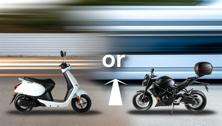Traditional Art Techniques
Traditional art techniques refer to the methods and materials that have been used for centuries by artists. These techniques include drawing, painting, sculpture, printmaking, and more. Many artists value traditional techniques for their hands-on and tactile nature. The act of physically creating art using these techniques can be a deeply immersive and meditative experience. Traditional techniques often require a high level of skill and mastery, as artists must carefully control and manipulate their chosen medium to achieve their desired results.
Digital Art Techniques
Digital art techniques, on the other hand, involve the use of digital tools and software to create art. These techniques include digital painting, 3D modeling, photo manipulation, and more. Digital art offers artists a wide range of possibilities and allows for experimentation and exploration without the constraints of traditional materials. With digital tools, artists can create complex and intricate artworks using layers, filters, and various editing features. Digital art also allows for easy sharing and reproduction, making it accessible to a larger audience.
Benefits of Mixing Traditional and Digital Art Techniques
Mixing traditional and digital art techniques can offer artists a unique set of advantages. By combining both methods, artists can leverage the strengths of each technique to create artworks that are visually striking and conceptually rich.,One of the primary benefits of mixing traditional and digital techniques is the ability to create hybrid artworks. Artists can begin their creative process by working with traditional materials, such as sketching or painting, and then incorporate digital tools to enhance or refine their artwork. This combination of traditional and digital elements often creates a sense of depth and complexity that is difficult to achieve using one method alone.,Another benefit of mixing traditional and digital techniques is the ability to experiment and explore new artistic styles and processes. Digital tools offer endless possibilities for manipulating and transforming traditional art materials. Artists can experiment with different textures, colors, and effects, allowing them to push the boundaries of their creativity and create artworks that are truly unique and innovative.,Additionally, mixing traditional and digital art techniques can offer practical advantages for artists. Digital tools allow for easy editing, making it possible to make changes or adjustments to artworks without the need to start from scratch. This flexibility can save artists time and resources, allowing them to iterate and refine their artworks more efficiently.,Lastly, mixing traditional and digital techniques can open up new opportunities for artists to showcase and share their artwork. Digital platforms and social media make it easier than ever to reach a global audience and connect with fellow artists and art enthusiasts. By mixing traditional and digital techniques, artists can create artworks that are not only visually stunning but also optimized for online sharing and viewing.
Conclusion
In conclusion, mixing traditional and digital art techniques can offer artists a range of benefits and possibilities. By combining the tactile and immersive qualities of traditional techniques with the endless possibilities of digital tools, artists can create artworks that are visually striking, conceptually rich, and technologically innovative. Whether you're a traditional artist looking to explore new possibilities or a digital artist wanting to incorporate more organic elements into your work, experimenting with the fusion of traditional and digital techniques can lead to exciting and unexpected results.








